Algorithm Design
M. T. Goodrich and R. Tamassia
John Wiley & Sons
Solution of Exercise R-1.7
The numbers in the first row are quite large. The table below calculates it approxi-
mately in powers of 10. People might also choose to use powers of 2. Being close
to the answer is enough for the big numbers (within a few factors of 10 from the
answers shown).
2106
1 Second
≈ 10300000
≈ 1012
106
≈ 105
1000
100
19
9
log n
√n
n
n logn
n2
n3
2n
n!
1 Hour
23.6×109
≈ 10109
≈ 1.3× 1019
3.6× 109
≈ 109
6× 104
≈ 1500
31
22.6×1012
1 Month
≈ 100.8×1012
≈ 6.8× 1024
≈ 2.6× 1012
≈ 1011
≈ 1.6× 106
≈ 14000
41
1 Century
23.1×1015
≈ 101015
≈ 9.7× 1030
≈ 3.12× 1015
≈ 1014
≈ 5.6× 107
≈ 1500000
51
12
15
17
�
Algorithm Design
M. T. Goodrich and R. Tamassia
John Wiley & Sons
Solution of Exercise R-1.10
The Loop1 method runs in O(n) time.
�
Algorithm Design
M. T. Goodrich and R. Tamassia
John Wiley & Sons
Solution of Exercise R-1.11
The Loop2 method runs in O(n) time.
�
Algorithm Design
M. T. Goodrich and R. Tamassia
John Wiley & Sons
Solution of Exercise R-1.12
The Loop3 method runs in O(n2) time.
�
Algorithm Design
M. T. Goodrich and R. Tamassia
John Wiley & Sons
Solution of Exercise R-1.13
The Loop4 method runs in O(n2) time.
�
Algorithm Design
M. T. Goodrich and R. Tamassia
John Wiley & Sons
Solution of Exercise R-1.19
By the definition of big-Oh, we need to find a real constant c > 0 and an integer
constant n0 ≥ 1 such that (n + 1)5 ≤ c(n5) for every integer n ≥ n0. Since (n +
1)5 = n5 +5n4 +10n3 +10n2 +5n +1, (n +1)5 ≤ c(n5) for c = 8 and n ≥ n0 = 2.
�
Algorithm Design
M. T. Goodrich and R. Tamassia
John Wiley & Sons
Solution of Exercise R-1.23
By the definition of big-Omega, we need to find a real constant c > 0 and an
integer constant n0 ≥ 1 such that n3 logn ≥ cn3 for n ≥ n0. Choosing c = 1 and
n0 = 2, shows n3 logn ≥ cn3 for n ≥ n0, since logn >≥ 1 in this range.
�
Algorithm Design
M. T. Goodrich and R. Tamassia
John Wiley & Sons
Solution of Exercise C-1.7
To say that Al’s algorithm is “big-oh” of Bill’s algorithm implies that Al’s algo-
rithm will run faster than Bill’s for all input greater than somenon-zero positive
integer n0. In this case, n0 = 100.
�

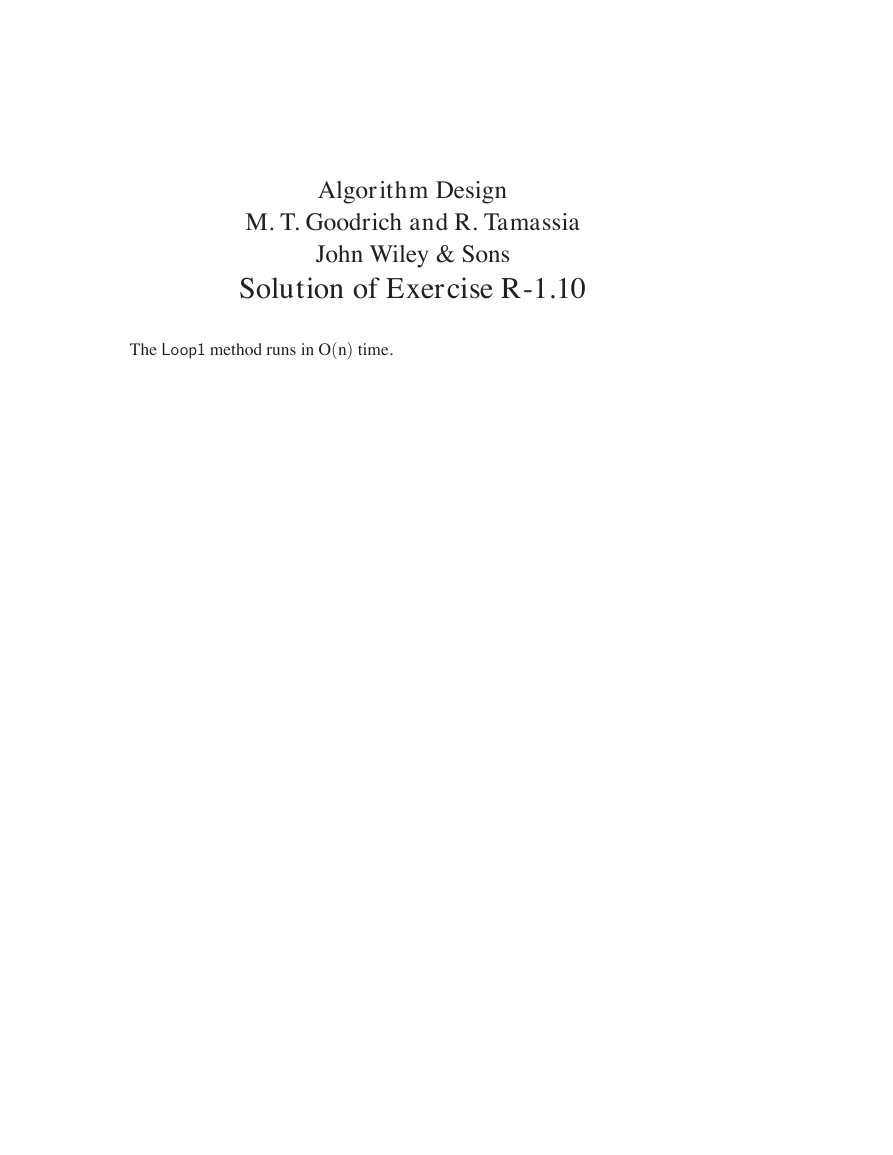
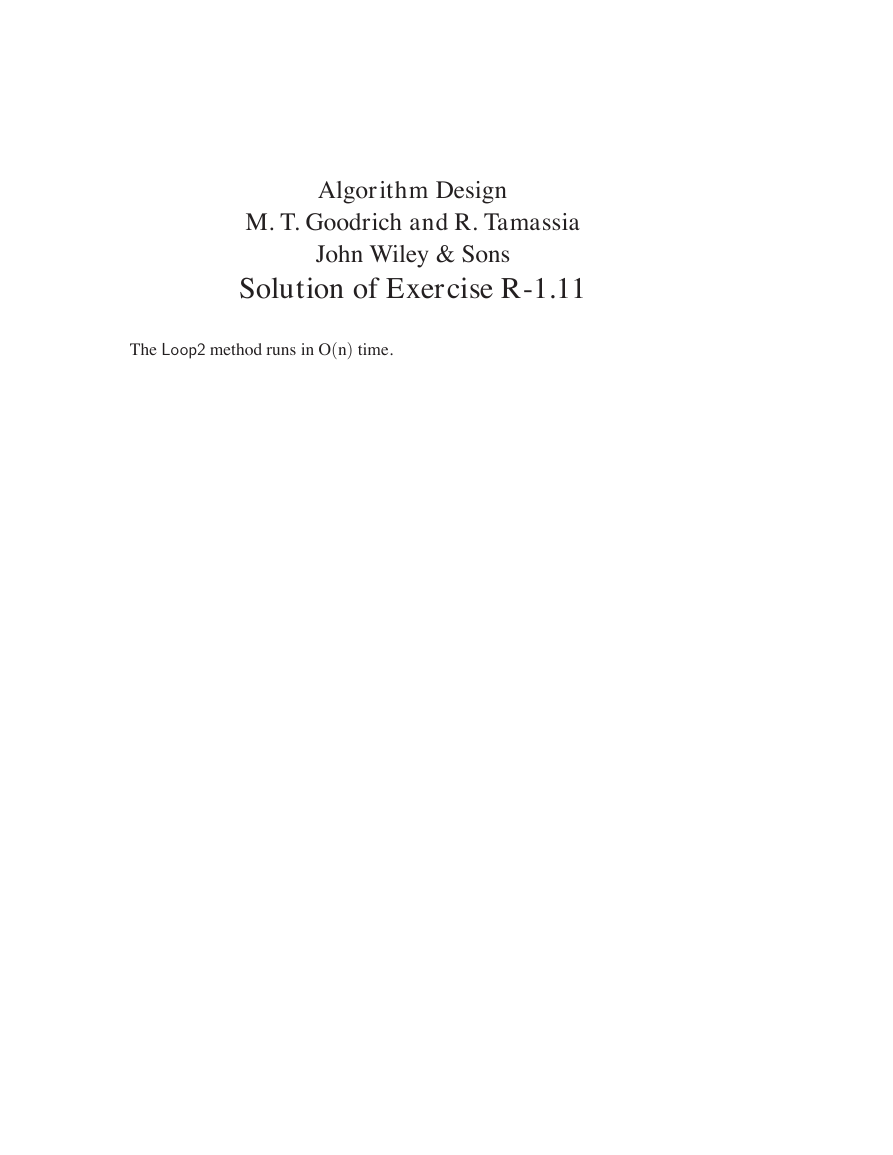
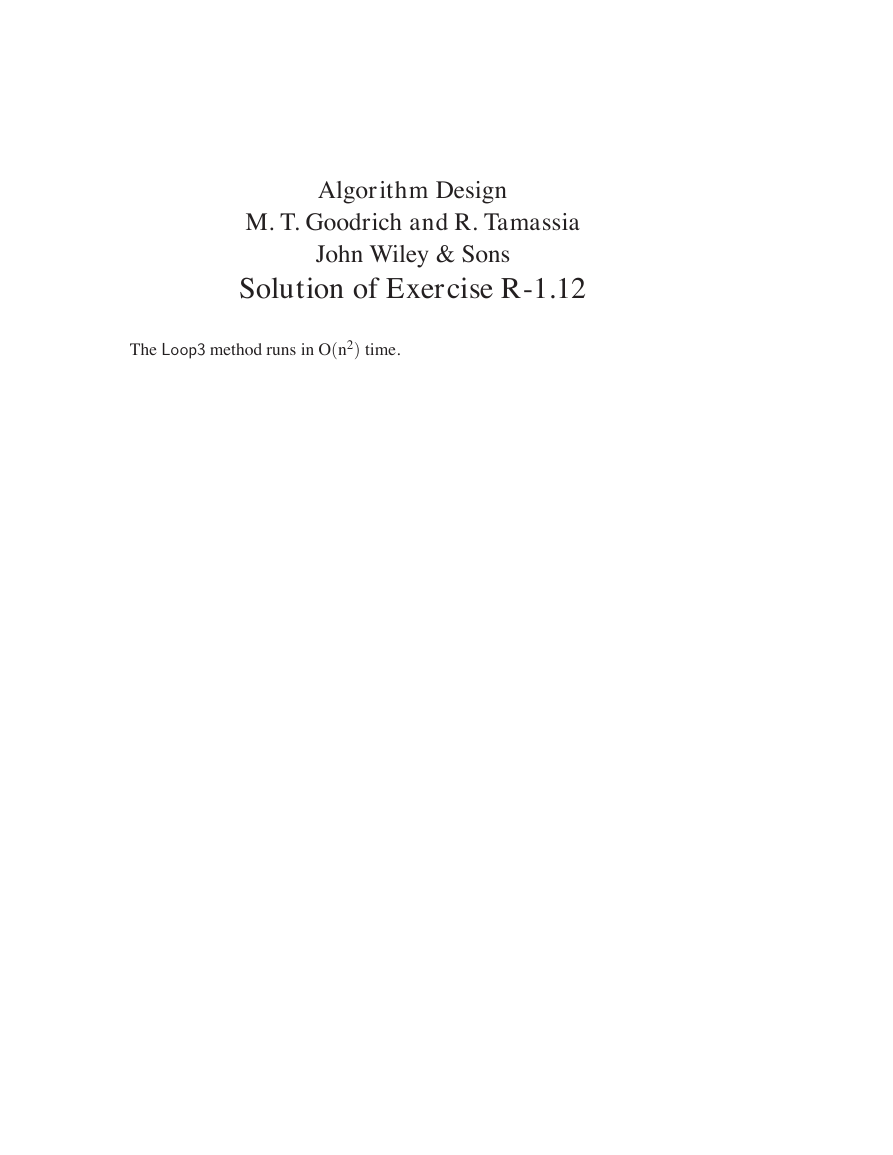
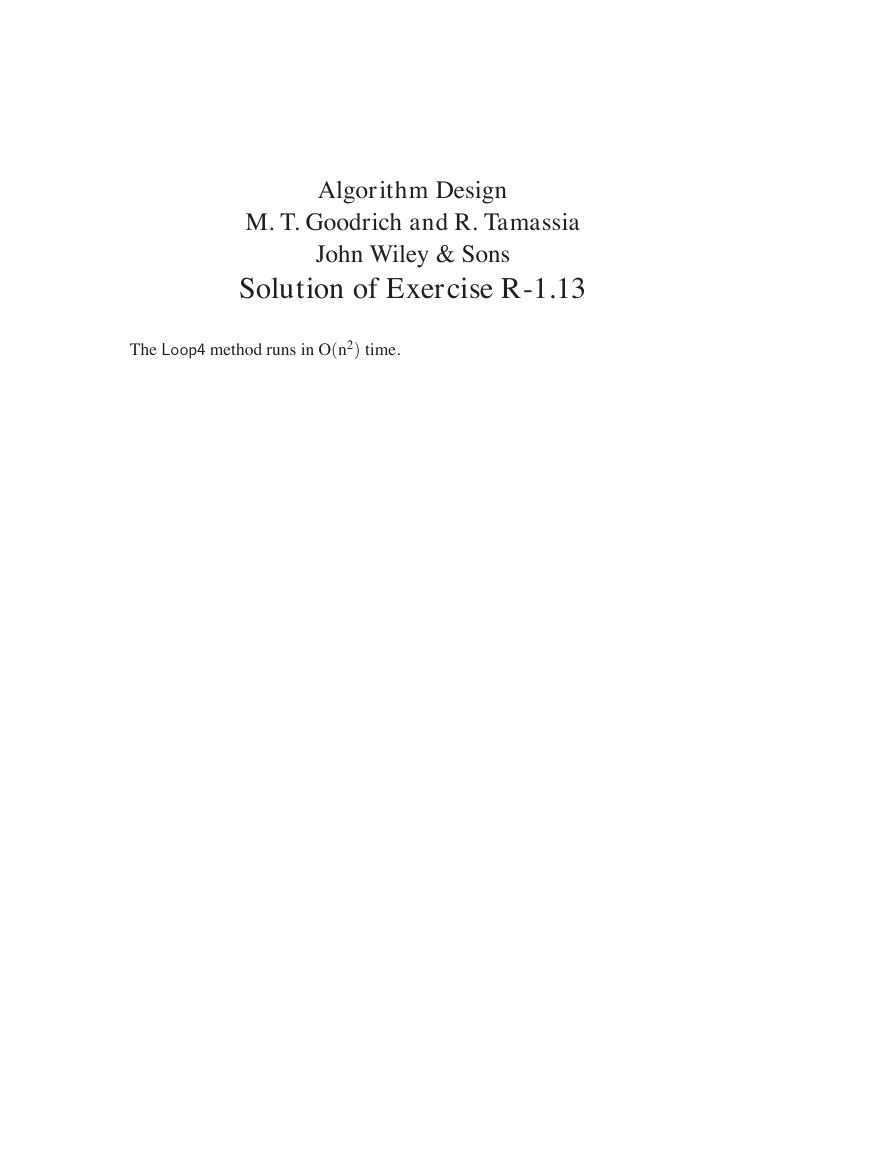
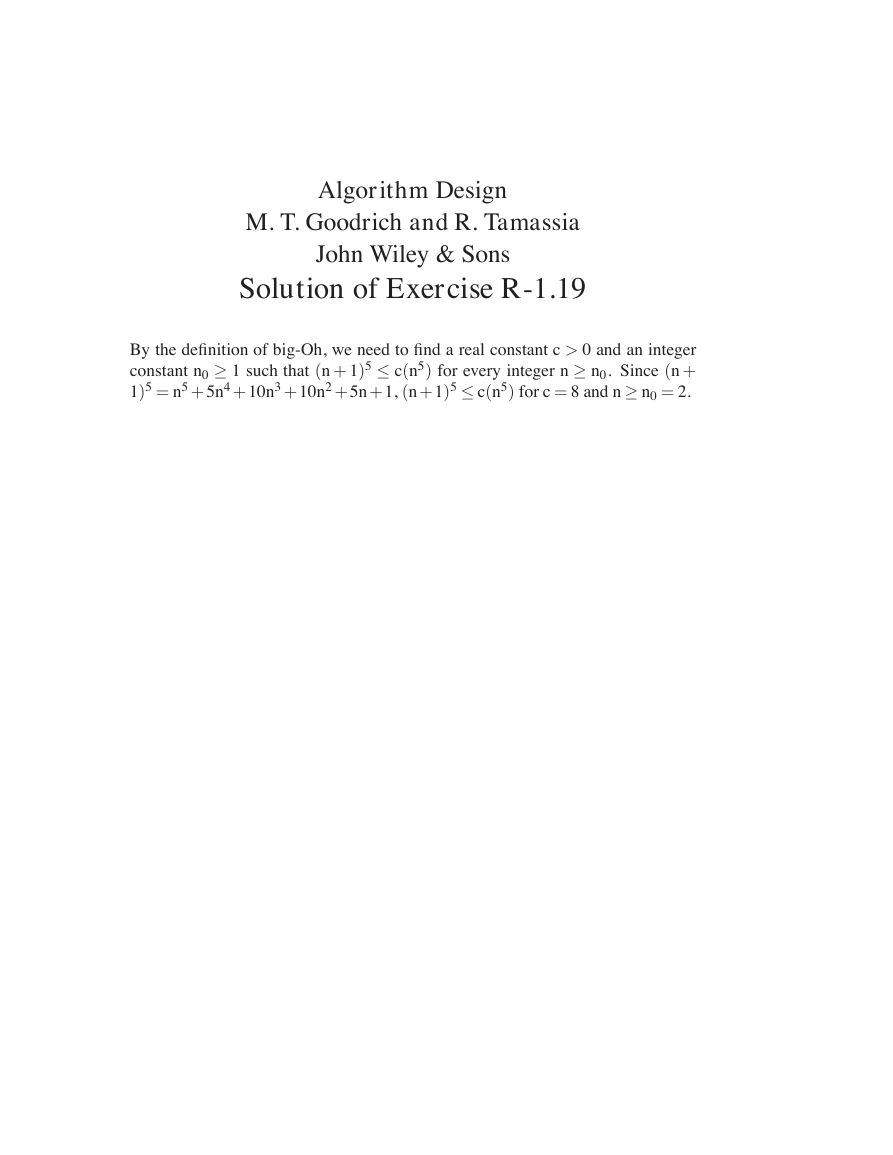
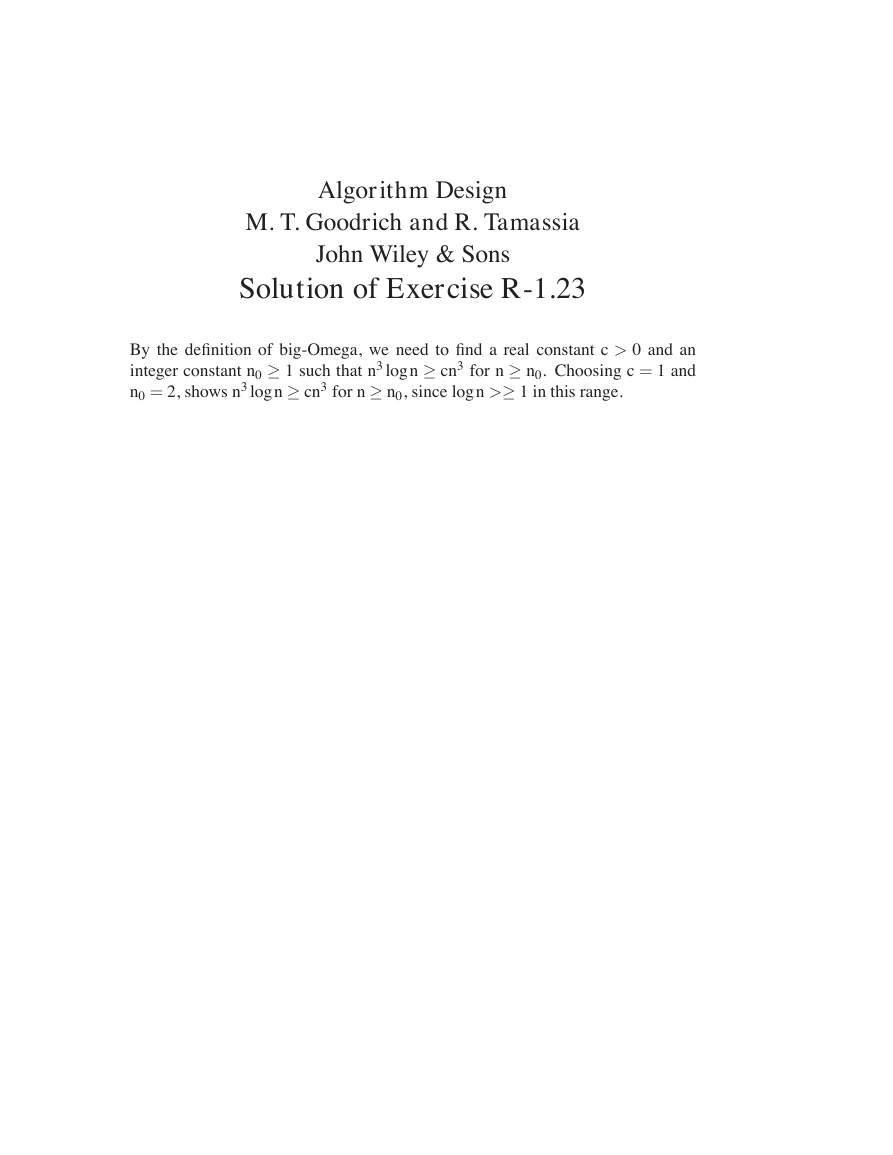









 2023年江西萍乡中考道德与法治真题及答案.doc
2023年江西萍乡中考道德与法治真题及答案.doc 2012年重庆南川中考生物真题及答案.doc
2012年重庆南川中考生物真题及答案.doc 2013年江西师范大学地理学综合及文艺理论基础考研真题.doc
2013年江西师范大学地理学综合及文艺理论基础考研真题.doc 2020年四川甘孜小升初语文真题及答案I卷.doc
2020年四川甘孜小升初语文真题及答案I卷.doc 2020年注册岩土工程师专业基础考试真题及答案.doc
2020年注册岩土工程师专业基础考试真题及答案.doc 2023-2024学年福建省厦门市九年级上学期数学月考试题及答案.doc
2023-2024学年福建省厦门市九年级上学期数学月考试题及答案.doc 2021-2022学年辽宁省沈阳市大东区九年级上学期语文期末试题及答案.doc
2021-2022学年辽宁省沈阳市大东区九年级上学期语文期末试题及答案.doc 2022-2023学年北京东城区初三第一学期物理期末试卷及答案.doc
2022-2023学年北京东城区初三第一学期物理期末试卷及答案.doc 2018上半年江西教师资格初中地理学科知识与教学能力真题及答案.doc
2018上半年江西教师资格初中地理学科知识与教学能力真题及答案.doc 2012年河北国家公务员申论考试真题及答案-省级.doc
2012年河北国家公务员申论考试真题及答案-省级.doc 2020-2021学年江苏省扬州市江都区邵樊片九年级上学期数学第一次质量检测试题及答案.doc
2020-2021学年江苏省扬州市江都区邵樊片九年级上学期数学第一次质量检测试题及答案.doc 2022下半年黑龙江教师资格证中学综合素质真题及答案.doc
2022下半年黑龙江教师资格证中学综合素质真题及答案.doc